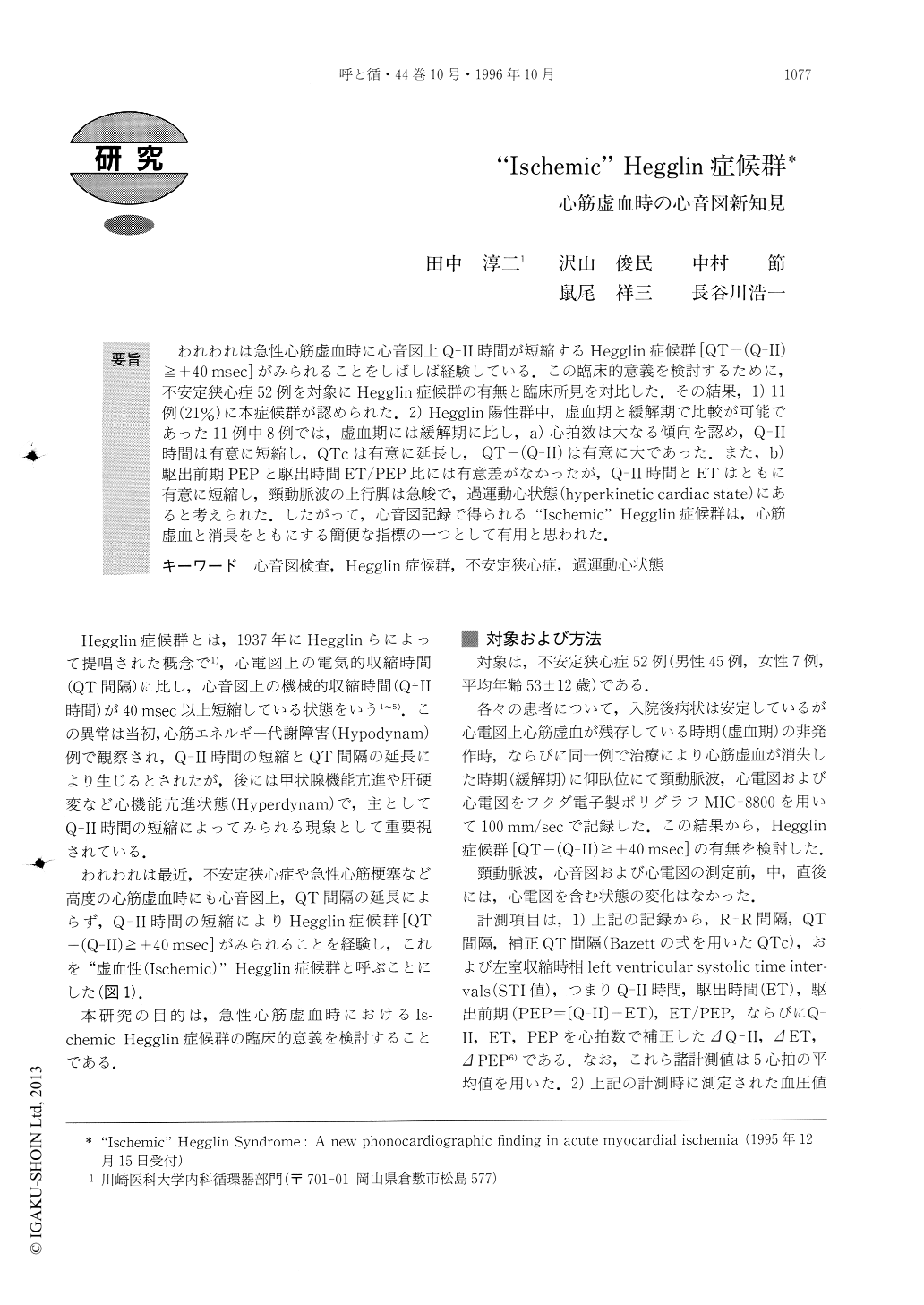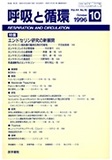Japanese
English
- 有料閲覧
- Abstract 文献概要
- 1ページ目 Look Inside
われわれは急性心筋虚血時に心音図上Q-II時間が短縮するHegglin症候群[QT—(Q-II)≧+40msec]がみられることをしばしば経験している.この臨床的意義を検討するために,不安定狭心症52例を対象にHegglin症候群の有無と臨床所見を対比した.その結果,1)11例(21%)に本症候群が認められた.2) Hegglin陽性群中,虚血期と緩解期で比較が可能であった11例中8例では,虚血期には緩解期に比し,a)心拍数は大なる傾向を認め,Q-II時間は有意に短縮し,QTcは有意に延長し,QT—(Q-II)は有意に大であった.また,b)駆出前期PEPと駆出時間ET/PEP比には有意差がなかったが,Q-II時間とETはともに有意に短縮し,頸動脈波の上行脚は急峻で,過運動心状態(hyperkinetic cardiac state)にあると考えられた.したがって,心音図記録で得られる“Ischemic”Hegglin症候群は,心筋虚血と消長をともにする簡便な指標の一つとして有用と思われた.
In patients with myocardial ischemia. we not infre-quently encounter a Hegglin syndrome [QT- (Q-II)≧+40 msec] accompanied with shortening of Q-II interval in phonocardiogram.
To examine the clinical implications of the “Is-chemic” Hegglin syndrome, 52 patients with unstable angina were selected, and this syndrome was compared with other clinical findings.
As a results. 1) this syndrome was positive in 11 patients (21%), 2) in 8 out of 11 patients, the recovered state was compared with the ischemic state, and the following findings were obtained ; a) the heart rate tended to be increased, the Q-II interval was significantly shortened, the QTc was significantly pro-longed. and the QT- (Q-II) was significantly increased, b) there were no significant changes in the pre-ejection period (PEP) or the ejection time (ET) /PEP ratio, but both the Q-II and ET were significantly shortened, and the upstroke of the carotid arteriogram was steep, so it was considered as a hyperkinetic cardiac state.
Accordingly, “Ischemic” Hegglin syndrome detected by phonocardiogram proved to be useful for a simple way to diagnose and follow-up patients with myocar-dial ischemia.

Copyright © 1996, Igaku-Shoin Ltd. All rights reserved.


